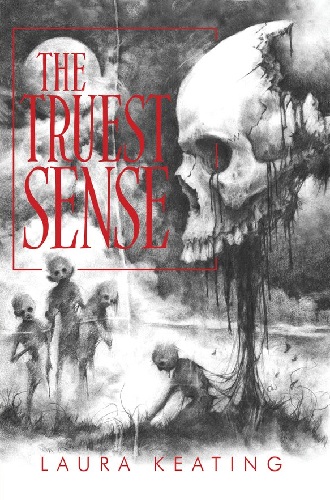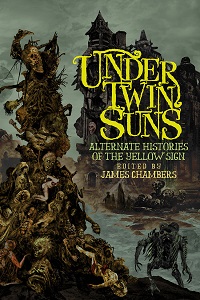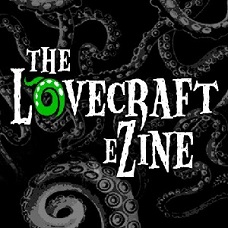Important Note: I kept things spoiler free, so read without worry.
The Truest Sense is a collection that feels like a throwback to the excellent horror I grew up with in the 90s. Reading through these tales reminded me of coming home from school to watch an episode of Goosebumps, or daring to read from In a Dark, Dark Room and Other Scary Stories. The cover (done by Chad Wehrle) even evokes the haunting artwork of the Scary Stories to Tell in the Dark series. There’s also a tremendous sense of fun to many of these tales. In terms of tone, this collection reminded me of the Stephen King and George A. Romero classic, Creepshow. Suffice it to say, you will have a good time inhabiting the spooky landscapes and disturbed minds conjured up by Laura Keating.
All the stories in The Truest Sense are worth your time, but I especially enjoyed “Final Notes on the Failed Expedition to the Sixth Theater,” “Forgetting Leviathan,” “It’s a Helluva Thing, Bill,” “When You Reach the Lighthouse,” and “Moon Rocks on Mars.” I also need to give a special shoutout to “Recipe Cards of Miss Grace Procktor, with Notes,” just for being a horror story told via a series of recipes. From a quick glance at the publication history, it appears all of these are original to The Truest Sense, so if you’re a publisher who does reprint publications, you need to get on acquiring a few of these gems for your audience!
A key component of most of my favorite stories was how time was used to great effect. Whether a protagonist was losing time, the story was jumping around in time, or things just progressed in an unusual manner, I found myself fascinated by Keating’s ability to weave a story without relying on the traditional flow of time or A to B causality. This ties into my next point. I think the thing I enjoyed most about Keating’s prose was her mastery of providing just enough detail to keep her horrors suggested rather than outright revealed.
In addition, several of the tales in The Truest Sense maintain a dreamlike atmosphere throughout, and you’re left wondering what was real. This is especially true of Keating’s stories where she puts you in the head of an unreliable narrator. There are also great insights into life. One line that struck a chord with me was relayed after a teen car accident: “Everyone was sad that they were dead, but excited that they had been killed.” This feels tragically true of all horrors in the social media age as people rush to engage with the worst news because it’s more exciting than a slow news day.
I didn’t go into overt detail on the various stories found within The Truest Sense because I wanted to keep this review spoiler free, but I noted several possible influences that potential readers might be interested to read about. Stephen King is obviously a huge one, but there’s also bits of Alex Garland’s Annihilation, Invasion of the Body Snatchers (78 is my preferred take), and It Follows, to name a few. Lastly, Keating is a master of describing seaside settings, presumably drawing from her real-life experience living around the coasts of eastern Canada. Fans of nautical horror tales like The Lighthouse and The Fog will find a lot of love in The Truest Sense.
You can pre-order a copy of The Truest Sense here, and you can learn more about the author by checking out my recent interview with Laura Keating.













